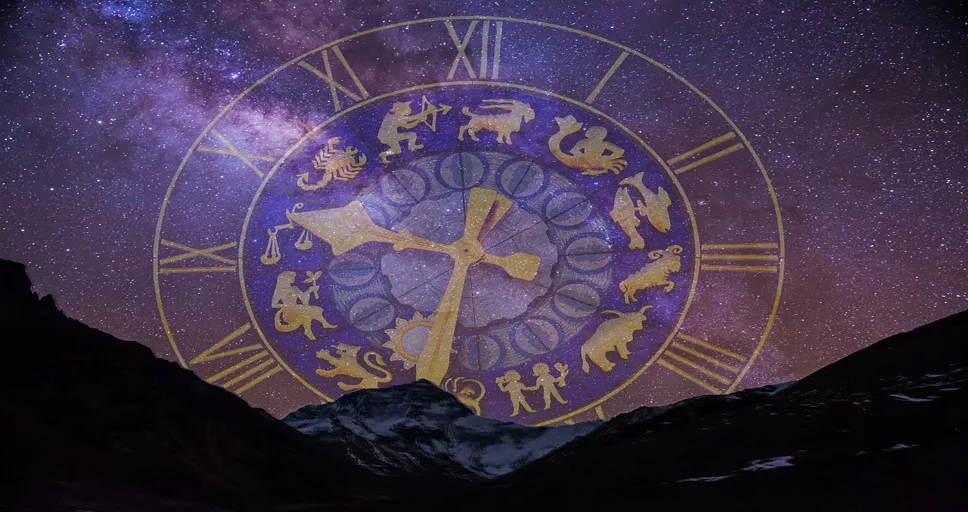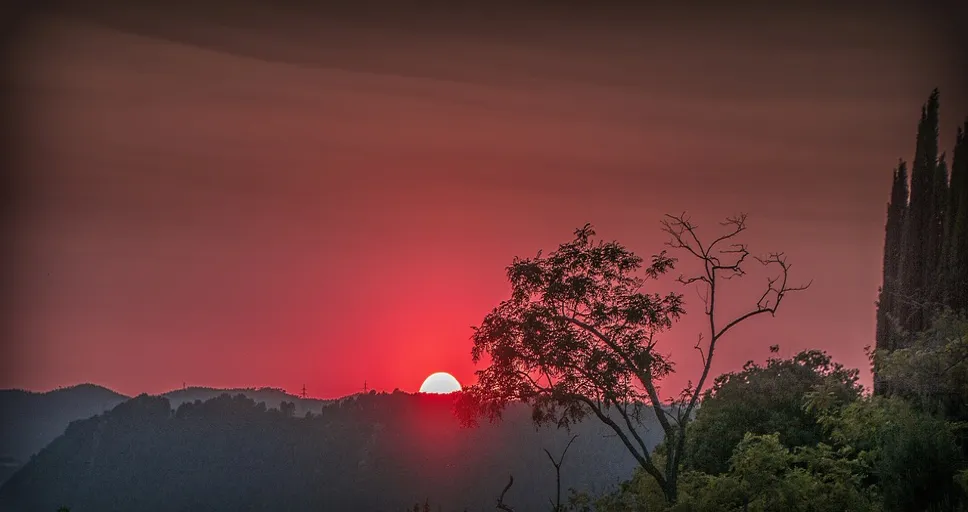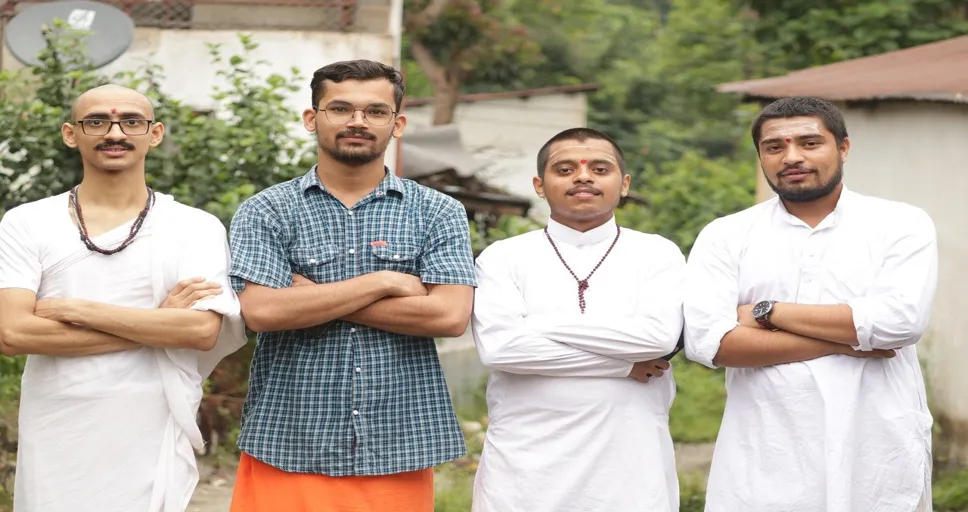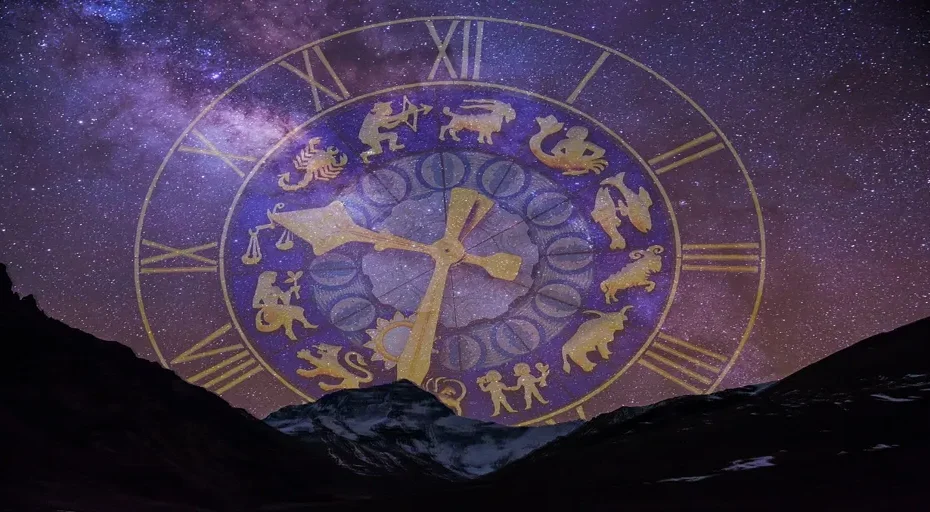As the Vedic winter solstice approaches, it brings with it a profound pause, a cosmic whisper in the cold that invites us to reflect and reconnect. This celestial event, marked by the shortest day and the longest night of the year, offers a unique opportunity to delve into practices that nourish the soul and honor traditions that have been cherished for centuries.
In the coming sections, we will explore various dimensions of this auspicious time. From spiritual practices that align us with cosmic rhythms to cultural traditions that deepen our connection with community and heritage, each aspect will be a step deeper into the heart of this winter’s silence. We will also uncover the astrological impacts that the solstice holds, weaving together a tapestry of insights that can guide us through the darker days.
Embracing the Vedic winter solstice is not just about marking a date on the calendar; it’s about opening ourselves to the lessons hidden in the night’s deep silence and the chilly embrace of winter’s peak. It’s a time for inner warmth and outer reflection, a chance to slow down, listen, and perhaps, find a little magic in the stillness.
- Embrace the Vedic winter solstice by engaging in sunrise meditation to align with the new solar cycle.
- Light fires or candles to symbolize the triumph of light over darkness.
- Recite Vedic mantras like the Gayatri Mantra for clarity and energy.
- Practice Surya Namaskar to honor the sun’s energy and renew the body.
- Take a reflective nature walk and observe the stillness the solstice brings.
- Journal reflections of the past year and set intentions for the new cycle.
- Create an altar offering gratitude to nature with fruits, flowers, and incense.
- Participate in traditional Vedic rituals and cultural traditions such as Sankranti festivities and special pujas.
- Engage in charitable acts and community feasts to connect with others.
- Reflect, recharge, and realign spiritually through these practices and traditions during the longest night of the year.
Table of Contents
21 Spiritual Practices for the Vedic Winter Solstice

The Vedic winter solstice is not merely a celestial event; it is a spiritual gateway that opens once a year, offering paths to introspection and renewal. In honoring this pivotal moment, there are numerous practices that can deepen one’s spiritual connection during this time of minimal daylight and maximum night. Here are twenty-one practices to embrace the profound energy of the solstice:
-
Sunrise Meditation: Rise early and welcome the sun as it begins its journey on the shortest day of the year. Meditating during the sunrise on the Vedic winter solstice can help attune your energy to the new solar cycle.
-
Light a Fire: Symbolizing the return of light, kindle a small fire or light a candle to affirm the triumph of light over darkness.
-
Chanting Mantras: Recite Vedic mantras that honor the sun, such as the Gayatri Mantra, to draw in energy and clarity for the coming months.
-
Yoga for Renewal: Perform Surya Namaskar, the Sun Salutation, to invigorate the body and honor the sun’s energy.
-
Nature Walks: Take a reflective walk in nature to observe the stillness and silence that the solstice brings.
-
Journaling: Write down your reflections from the past year and set intentions for the new cycle.
-
Offer Gratitude: Create an altar with offerings of fruits, flowers, and incense as a token of gratitude to nature’s bounty.
-
Attend a Ritual: Participate in or observe traditional Vedic rituals that are specific to the solstice.
-
Herbal Tea Ritual: Brew and consume herbal teas made from tulsi or ginger, focusing on the warmth they bring.
-
Feed the Birds: On this day of giving, feed birds and other wildlife, acknowledging their role in our world’s ecosystem.
-
Silent Retreat: Spend the day in silence, allowing the quiet of the solstice to permeate your being.
-
Charitable Acts: Perform acts of kindness or give to charity, embodying the spirit of generosity and connection.
-
Craft Solstice Decor: Create DIY decorations using natural materials to celebrate the season.
-
Fasting: Fast from sunrise to sunset to cleanse the body and spirit, breaking your fast with a nutritious meal.
-
Solstice Dance: Engage in a dance alone or with loved ones to celebrate life and the energy of the sun.
-
Aromatherapy: Use scents like frankincense or myrrh to cleanse your home and invite warmth.
-
Stargazing: Embrace the extended night by observing the stars and contemplating your place in the universe.
-
Spiritual Reading: Spend time with texts that inspire and challenge you to grow spiritually.
-
Warm Baths: Take a warm bath infused with essential oils and herbs to relax and rejuvenate.
-
Sacred Music: Listen to or perform music that uplifts and connects you to a higher consciousness.
-
Visualization: Engage in a guided visualization of light filling and warming the earth, symbolizing the return of longer days.
Each of these practices offers a way to engage with the profound stillness and potential that the Vedic winter solstice brings, allowing individuals to reflect, recharge, and realign with their spiritual paths as the sun begins its new cycle.
21 Cultural Traditions of the Vedic Winter Solstice
The Vedic winter solstice, a time steeped in mystique and tradition, serves as a profound moment for cultural celebration and introspection across many communities. This section explores twenty-one cultural traditions that illuminate this darkest day of the year, each carrying the essence of heritage and shared memory.
-
Lamps of Hope: Lighting oil lamps around homes and temples to symbolize the return of light and hope.
-
Sankranti Festivities: Celebrating Makar Sankranti shortly after the solstice, where kites fill the sky, representing freedom and a colorful mosaic of human aspiration.
-
Pongal Preparations: In preparation for Pongal, which follows the solstice, homes are cleaned and decorated to welcome prosperity and good fortune.
-
Special Solstice Puja: Conducting special pujas (prayer rituals) dedicated to Lord Surya (the Sun God) to honor his cosmic cycle.
-
Community Feasts: Organizing grand feasts that bring together people of all ages to share meals prepared from seasonal harvests.
-
Bonfires and Folk Dances: Gathering around bonfires, performing traditional dances and singing folk songs that trace back generations.
-
Rangoli Art: Creating elaborate rangoli designs at the entrance of homes using colored powders and flowers to invite blessings.
-
Storytelling Sessions: Elders sharing stories and wisdom associated with the solstice, passing down knowledge through generations.
-
Temple Pilgrimages: Undertaking pilgrimages to sacred sites and temples, a journey reflecting inner spiritual quests.
-
Charitable Giving: Emphasizing dana (charity), where people donate food, clothes, and other essentials to the less fortunate.
-
Sacred Bathing: Taking ritual baths in rivers or lakes, believed to cleanse the soul and renew spiritual vigor.
-
Winter Solstice Fairs: Local fairs that feature crafts, food, and games, fostering community spirit and togetherness.
-
Musical Offerings: Special musical performances using traditional instruments that narrate tales of the cosmos and divinity.
-
Heritage Walks: Organized walks through historical areas, exploring stories and landmarks significant to the solstice.
-
Winter Crops Sowing: Sowing seeds of specific winter crops as a symbolic gesture of growth and renewal.
-
Ayurvedic Rejuvenation: Engaging in Ayurvedic practices that balance and rejuvenate the body in tune with the solstice energies.
-
Astrological Consultations: Consulting astrologers for insights on how to navigate the coming months based on the solstice alignments.
-
Cultural Workshops: Conducting workshops on crafts, cooking, and other cultural arts associated with this time of year.
-
Peace Prayers: Holding multi-faith prayer meetings to pray for peace and harmony across the world.
-
Eco-Conscious Activities: Initiating environmental activities such as tree planting, emphasizing the solstice as a time of renewal for nature as well.
-
Night Vigils: Staying awake through the night in meditation or prayer, embracing the extended darkness before the dawn of longer days.
These traditions weave a rich cultural tapestry around the Vedic winter solstice, celebrating not only the celestial phenomenon but also the deep human connections to the rhythms of the universe. Each tradition invites individuals and communities to pause, reflect, and celebrate together, reinforcing bonds and spiritual foundations as the earth tilts back towards the sun.
21 Astrological Impacts of the Vedic Winter Solstice

The Vedic winter solstice is not only a turning point in the seasonal cycle but also a pivotal moment astrologically. This celestial juncture influences the energies that govern our lives, manifesting changes and opportunities. Here are twenty-one astrological impacts associated with this significant time:
-
Sun’s Transition into Capricorn: This marks a period of practicality and discipline, urging us to set structured goals.
-
Enhanced Spiritual Insight: The solstice amplifies spiritual and psychic energies, opening doors to deeper self-awareness.
-
Renewed Focus on Foundations: It influences a return to basics, stressing the importance of security and stability in our lives.
-
Heightened Emotions: The sun’s energy can intensify feelings, pushing issues to the surface for resolution.
-
Karmic Releases: It’s a prime time for karmic cleansing, allowing us to let go of old burdens and embrace new beginnings.
-
Shift in Power Dynamics: Relationships may experience shifts, highlighting themes of control and independence.
-
Boost in Creativity: The creative juices flow more freely now, especially for signs governed by the moon.
-
Re-evaluation of Careers: Many may feel compelled to ponder their professional journey, considering changes or advancements.
-
Strengthening of Bonds: The solstice fosters closeness in relationships, encouraging harmonious interactions.
-
Increased Dream Activity: Dreams may become more vivid or meaningful, offering insights into subconscious thoughts.
-
Financial Planning: It’s an opportune time to reassess finances, planning for future security.
-
Health Consciousness: There’s a heightened awareness around health, urging better care and possibly new routines.
-
Social Expansion: Networking is favored, with new connections likely to be beneficial in the long term.
-
Cultural Appreciation: Interests in different cultures and philosophies might grow, expanding personal worldviews.
-
Emotional Healing: The solstice is a healing time, especially for emotional wounds, promoting inner peace.
-
Leadership Opportunities: It encourages taking charge and can bring opportunities to lead.
-
Learning and Education: Pursuing new educational paths is favored, enriching both personal and professional life.
-
Travel Desires: The urge to travel and explore new places increases, driven by a quest for knowledge and adventure.
-
Technological Advances: Innovations and new technologies might play a more significant role in daily life.
-
Artistic Expression: Many will find a new or renewed interest in artistic activities as a form of expression.
-
Environmental Awareness: There’s a greater sensitivity to environmental issues, inspiring actions towards sustainability.
As the Vedic winter solstice casts its long shadow, the cosmos dances in quiet harmony, setting the stage for personal and collective transformations. These astrological impacts invite us to embrace change, seek growth, and prepare for the sun’s renewed journey across the sky.
- The Vedic winter solstice is a profound spiritual and cultural event, offering a pause for introspection and renewal.
- It features the shortest day and longest night of the year, providing unique opportunities for spiritual practices and cultural traditions.
- Spiritual activities include sunrise meditation, lighting fires, chanting mantras, and nature walks to align with cosmic rhythms.
- Cultural traditions involve lighting oil lamps, special pujas, community feasts, and storytelling sessions to deepen community ties.
- Both spiritual practices and cultural traditions aim to recharge, reflect, and realign with spiritual paths and community heritage as the sun begins its new cycle.
Vedic Astrology New Year and Winter Solstice
Frequently Asked Questions

What is the winter solstice called in India?
The winter solstice is not commonly referred to by a specific name in India that distinguishes it from the general concept known globally.
What is the winter solstice festival in India called?
The winter solstice festival in India is commonly known as Makar Sankranti in most parts of the country.
Conclusion
As we draw the curtains on our exploration of the Vedic winter solstice, we are reminded of the profound interconnectedness of the cosmos, culture, and the inner self. This celestial event, far more than just a point in time, acts as a gateway to deep reflection and renewal. Each tradition, practice, and astrological insight we’ve shared not only enriches our understanding but also invites us to participate in a dance as old as time itself.
The Vedic winter solstice is a moment when the past, present, and future momentarily align, offering us a chance to reset our spiritual compass and realign our lives with the natural world. It is a time for setting intentions, embracing changes, and preparing for new growth. As the sun stands still, so too can we, taking stock of where we are and where we wish to go.
In embracing these insights, let us move forward with a renewed sense of purpose and optimism. The solstice teaches us about the impermanence of darkness and the promise of light. As we cycle through the seasons, may the lessons of this sacred time inspire us to find light within and share it with others. The Vedic winter solstice isn’t just an event to observe but a moment to live deeply, resonating with the celestial rhythms that guide the very pulse of life.
In the stillness of the longest night, may you find the sparks that illuminate your journey onward, keeping the eternal dance of the universe alive in your steps. As the sun renews its journey, may we too find paths that lead us to greater light, warmth, and understanding.
